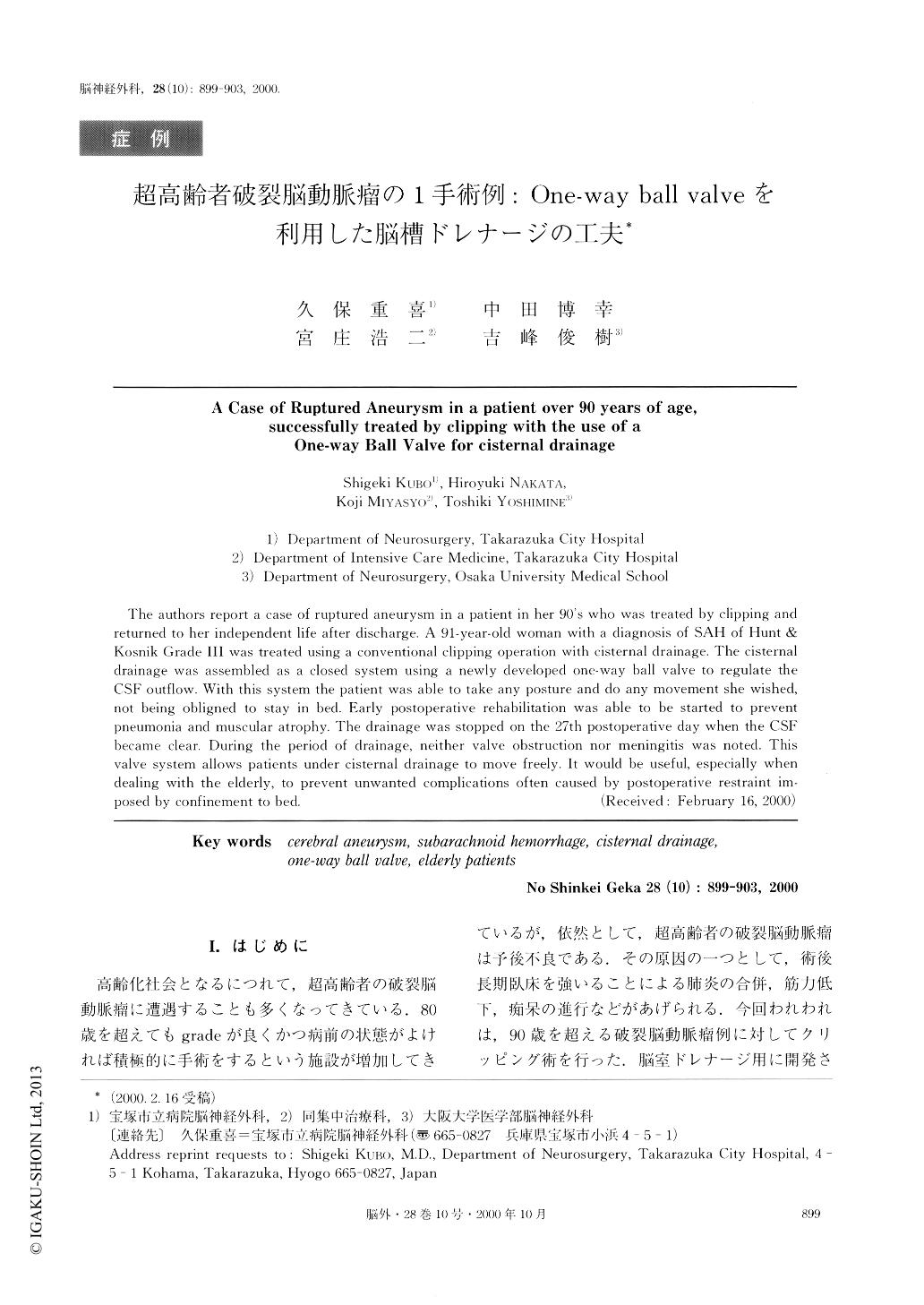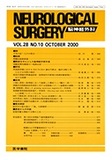Japanese
English
- 有料閲覧
- Abstract 文献概要
- 1ページ目 Look Inside
I.はじめに
高齢化社会となるにつれて,超高齢者の破裂脳動脈瘤に遭遇することも多くなってきている.80歳を超えてもgradeが良くかつ病前の状態がよければ積極的に手術をするという施設が増加してきているが,依然として,超高齢者の破裂脳動脈瘤は予後不良である.その原因の一つとして,術後長期臥床を強いることによる肺炎の合併,筋力低下,痴呆の進行などがあげられる.今回われわれは,90歳を超える破裂脳動脈瘤例に対してクリッピング術を行った.脳室ドレナージ用に開発されたone-way ball valveであるアクティーバルブⅡ®(カネカメディクス)を,術後早期に脳槽ドレナージに利用することにより,早期離床を促し独歩退院とすることができた.超高齢者くも膜下出血術後管理の問題点につき若干の考察を加えつつ報告する.
The authors report a case of ruptured aneurysm in a patient in her 90's who was treated by clipping and returned to her independent life after discharge. A 91-year-old woman with a diagnosis of SAH of Hunt & Kosnik Grade Ⅲ was treated using a conventional clipping operation with cisternal drainage. The cisternal drainage was assembled as a closed system using a newly developed one-way ball valve to regulate the CSF outflow. With this system the patient was able to take any posture and do any movement she wished, not being obligned to stay in bed. Early postoperative rehabilitation was able to be started to prevent pneumonia and muscular atrophy. The drainage was stopped on the 27th postoperative day when the CSF became clear. During the period of drainage, neither valve obstruction nor meningitis was noted. This valve system allows patients under cisternal drainage to move freely. It would be useful, especially when dealing with the elderly, to prevent unwanted complications often caused by postoperative restraint im-posed by confinement to bed.

Copyright © 2000, Igaku-Shoin Ltd. All rights reserved.


